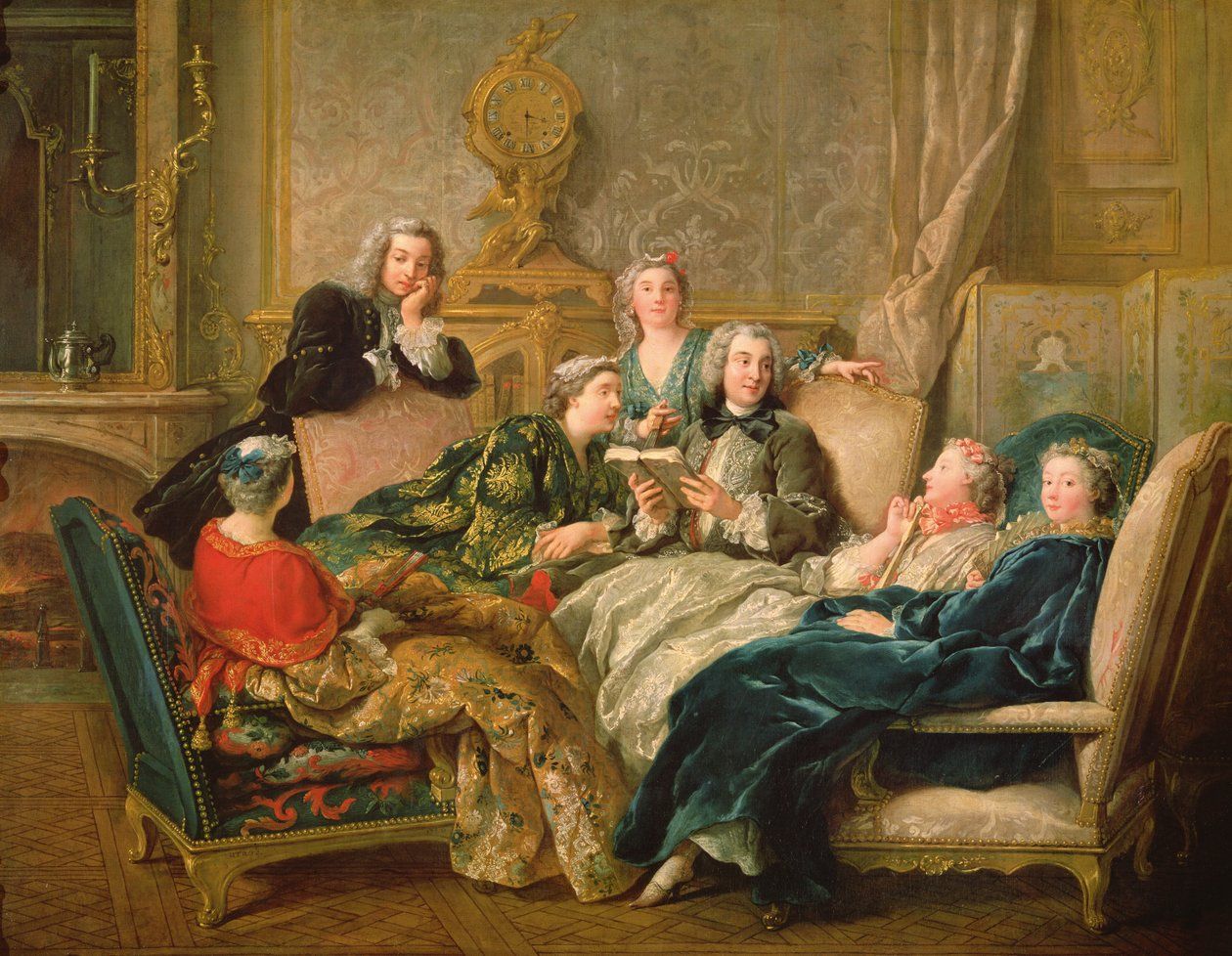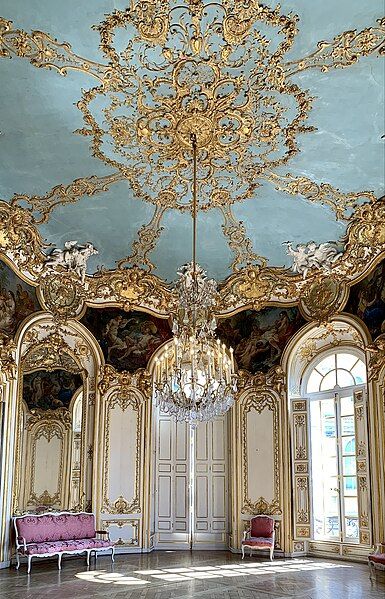The ideal civilized life of 18th-century France, characterized by its luxury and elegance, is vividly reflected in the era's architecture, decor, and paintings. A quintessential example of this lifestyle can be seen in Jean-François de Troy's (1679-1752) painting, "A Reading from Molière." This artwork, with its meticulous detail and lively scene, recreates the cultural atmosphere of the French upper class during the 18th century.

The painting might be derived from a novel or a theatrical scene, with each character's features depicted with great precision, and the room's decor rendered in exquisite detail, making it a classic piece of group portraiture. The figures in the painting wear the most fashionable attire of the late 1720s, including the silk patterns worn by two ladies, woven in Lyon in 1728. Despite their luxurious clothing, the characters appear completely relaxed. Five of the main characters are deeply engrossed, while two others seem to engage with the viewer outside the frame, enhancing the sense of participation.
De Troy's painting breaks the formality often found in traditional group portraits through the subtle exchange of glances and the use of contrasting colors, showcasing a carefree and fashionable contemporaneity. The only link to the past is Molière's works, which satirize the vanity and hypocrisy of society under Louis XIV.
The room depicted in the painting is bathed in light, with mirrors reflecting and amplifying the brightness. Every detail of the decor, from the gilded candelabras with curly carvings to the similarly patterned walls and the clock symbolizing enduring love, is meticulously designed to be both elegant and comfortable. The design emphasizes both decorative luxury and living comfort.
Most 18th-century French buildings have been renovated or redecorated, with few retaining the original elegance and ease of the era as vividly as de Troy's painting. The Princess's Salon at the Hôtel de Soubise in Paris, one of the finest surviving examples of Rococo interior decoration, was designed by Gabriel-Germain Boffrand and completed between 1739 and 1740. Even today, this room appears almost magical, with its walls and decorations exuding vitality.

Boffrand's successful integration of the then-popular oval patterns and light modulation creates a space that is both structured and lively. The intricate plasterwork on the ceiling, the white Cupid reliefs at the openings (doors, windows, and mirrors), and the Cupid and Psyche myth-themed mosaics by Charles-Joseph Natoire, together form a complete work of art. Despite its large size, the room's design remains light and graceful, embodying the essence of the Rococo style.
Rococo style not only emphasizes the decoration of small rooms but also responds to the need for spaces that suit human purposes and proportions. Consequently, this style avoids elements that might make the occupants feel small, emphasizing a balance of comfort and elegance.
Through de Troy's "A Reading from Molière" and the Princess's Salon at the Hôtel de Soubise, we gain insight into a facet of 18th-century French ideal civilized life. This life combined cultural depth with visual enjoyment, reflecting the era's pursuit of elegance and comfort.